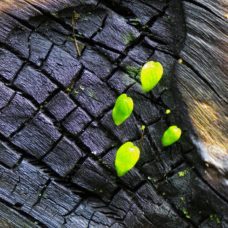Solar cells are popular for their sustainability, never their beauty.
We expect a solar cell to be durable and generate electricity efficiently. The thinking is since these solar panels usually end up on our homes’ roofs, they don’t have to look good.
But that’s not always the case.
Back in 2015 Dutch designer, Marjan van Aubel came up with an innovative solar cell concept. It was a solar cell stained-glass windows that consisted of semiconductor crystal layers, titanium dioxide, and dye.
Marjan aims to turn solar cells into an invisible and naturalized technology. That way, we can generate green energy from everyday objects such as stained glass windows.
“I imagine these in a church,” she said at the time. “They would be so amazing there, but you could also have them in offices or as facades in libraries or museums.”
Unfortunately, Marjan van Aubel’s technology has only been able to generate a limited amount of electricity. As a result, the concept may not be practical for everyday use.
However, that could change soon. A team of researchers from South Korea has developed a more efficient non-silicon solar cell concept.
Using Colored Copper to Create a New form of Solar Cells

Scientists from the Electronics and Telecommunications Research Institute (ETRI) developed solar cells using thin films of colored copper.
After applying thin layers of the cell onto films of glass substrates, the researchers made an exciting discovery.
It turns out that the cells have a higher sunlight absorption rate than other non-silicon based solar cells. So, it offers a higher conversion efficiency and more extended stability.
Since the new solar cell requires less raw materials than the traditional silicon-based cells, they are cheaper to produce.
In a statement, the principal researcher behind the solar cell’s development, Yong-Duck Chung said:
“This technology will contribute to the solar power system development by producing high value-added color photovoltaic modules.”
Currently, the researchers have only tested the solar cells under lab conditions. However, they claim to have addressed any issues that could prevent the “full-on commercialization” of the technology.
The solar cell can be produced in seven different colors, including purple, green, and blue. One potential application of the technology involves creating electricity-generating stained-glass windows.


















Comments (0)
Most Recent